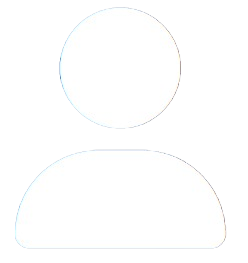Applying for an ABA Variance
Provide more opportunities for students by incorporating the JD-Next score report into admissions decisions, allowing for a broader evaluation of law school applicants' potential success.

Frequently Asked Questions (FAQs)
SHORT ANSWER: JD-Next may be used instead of legacy tests by any law school that receives a variance from the ABA Section on Legal Education. A school that has not received a variance may not admit any candidate whose application includes solely a JD-Next score. However, the school may still consider JD-Next as part of a holistic review, provided that the applicant also has submitted a valid LSAT or GRE score.
ANALYSIS: ABA-approved law schools must comply with Standard 503, which requires the use of a valid and reliable admissions test during the admissions process. Under this Standard, and the most recent ABA Managing Director’s Guidance Memorandum Interpreting Standard 503 and Interpretation 503-3, ABA-approved law schools may incorporate JD-Next into their admissions process in two ways:
(1) As a direct admissions test, provided the school requests a variance from the ABA under Standard 107, ensuring that JD-Next complies with the admissions test requirement of Standard 503;
(2) As an optional, supplemental admissions addendum alongside another valid and reliable test. In this circumstance, the law school must satisfy Standard 503 by reporting a valid LSAT or GRE score for each enrolled student; however, applicants’ JD-Next scores may serve as a supplemental component that the admissions committee may consider when assessing candidates’ aptitude for law school coursework, or when comparing candidates with similar metrics, for example those candidates placed on a waitlist.
SHORT ANSWER: The annual questionnaire (AQ) reporting requirements instruct that when an enrolled student has submitted scores from multiple testing companies, law schools report a single test score as the basis for that student’s admission.
ANALYSIS: When reporting data for enrolled students, the 2025 ABA 509 Required Disclosures Questionnaire (Part II – Admissions & Enrollment) states:
“Schools shall report one standardized test score (LSAT, GRE, JD-Next, SAT, ACT, etc.) for each enrollee. If an enrollee submitted a standardized test score from more than one standardized test company, the school shall choose which score to submit.”
2025 ABA Annual Questionnaire, pt. II, at 8-9 (emphasis added). Under this framework, on October 15, 2025, a law school that has received a JD-Next variance may:
(i) Report a JD-Next score for any enrolled student who only reported a JD-Next score, or
(ii) Exercise its discretion by reporting either the JD-Next, LSAT, or GRE score for any enrolled students who submitted scores from more than one testing company.
The ABA Annual Questionnaire states that law schools cannot report multiple test scores for enrolled students, and neither the ABA Standards nor the reporting rules prioritize one test over another.
SHORT ANSWER: JD-Next scores have a direct impact on U.S. News ranking when a school has 10 or more matriculants in which the school is reporting the JD-Next score as the admissions test. At this time, for most schools, the JD-Next score does not have a direct impact. However, when a law school admits a student with both a JD-Next score and another admissions test, the law school’s decision on which test to report will have an impact, either positive or negative. See below for more details.
ANALYSIS: When a student has both a JD-Next score and another admissions score, such as the LSAT, the school must make a decision as to which score to include in its 509 reporting. The 509 report, in turn, serves as a basis for the U.S. News rankings. The four possible scenarios and their impact on a school’s rankings (assuming that the school reports less than 10 students with a JD-Next score) are shown below.
Scenario 1: The student’s LSAT score is above the median score of the admitting class; the school reports the LSAT score instead of the JD-Next score. This will raise the school’s overall median and percentile scores.
Scenario 2: The student’s LSAT score is above the median score of the admitting class; the school reports the JD-Next score instead of the LSAT score. This will lower the school’s overall median and percentile scores.
Scenario 3: The student’s LSAT score is below the median of the admitting class. The school reports the JD-Next score instead of the LSAT score. This will raise the school’s overall median and percentile scores. Scenario 4: The student’s LSAT score is below the median of the admitting class. The school reports the LSAT score instead of the JD-Next score. This will lower the school’s overall median and percentile scores.
JD-Next is a unique admissions test that is not interchangeable with other admissions tests. Schools should consider the format and content that is tested by different admissions’ tests when weighting the value of each test. Currently, Aspen Publishing is developing an Excel-based tool to aid schools in weighting the different admissions’ tests when evaluating student profiles. A screenshot of the tool is shown below. If you are interested in being part of the beta testing of this tool, please contact our Manager of Psychometrics, Joe McClintock, at joseph.mcclintock@aspenpublishing.com.

 HELP
HELP
 ENROLL NOW
ENROLL NOW
 LOGIN
LOGIN
